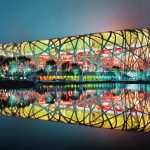MIT researchers are designing 3d printed shoes for marathon runners. The shoe will comprise a person’s height, weight, and general mass. Sarah Fay, a postdoc in MIT’s Sports Lab and the Institute for Data, Systems, and Society (IDSS), “Shoe designers are starting to 3D print shoes, meaning they can now make them with a much wider range of properties than with just a regular slab of foam.”
“We’ve allowed for enough flexibility in the model that it can be used to design custom shoes and understand different individual behaviors,” Fay states. “Way down the road, we imagine that if you send us a video of yourself running, we could 3D print the shoe that’s right for you. That would be the moonshot.”
The new model developed by the team resulted from consultations with partners in the sneaker industry. In this industry, designers have recently begun to use 3D printing to manufacture shoes on a large scale. These shoe designs feature midsoles that are 3D printed and have a complex scaffold-like structure. The design of these midsoles can be customized to provide varying levels of bounce or stiffness in specific areas of the sole.
“With 3D printing, designers can tune everything about the material response locally,” Hosoi says. “Part of the design problem is to predict what a runner will do when you put an entirely new shoe on them,” Fay adds. “You have to couple the dynamics of the runner with the properties of the shoe.”
The researcher inspired by Thomas McMahon, a biomechanics leader at Harvard University, used a basic “spring and damper” model to simulate the essential gait mechanics of a runner.
“McMahon’s work showed that, even if we don’t model every single limb and muscle and component of the human body, we’re still able to create meaningful insights in terms of how we design for athletic performance,” Fay says. Also, a project is supported by Addidas.
“In some ways, this gives you a quantitative way to design a shoe for a 10K versus a marathon shoe,” Hosoi says. “Designers have an intuitive sense of that. But now we have a mathematical understanding that we hope designers can use as a tool to kickstart new ideas.”
References 1



















Leave a comment